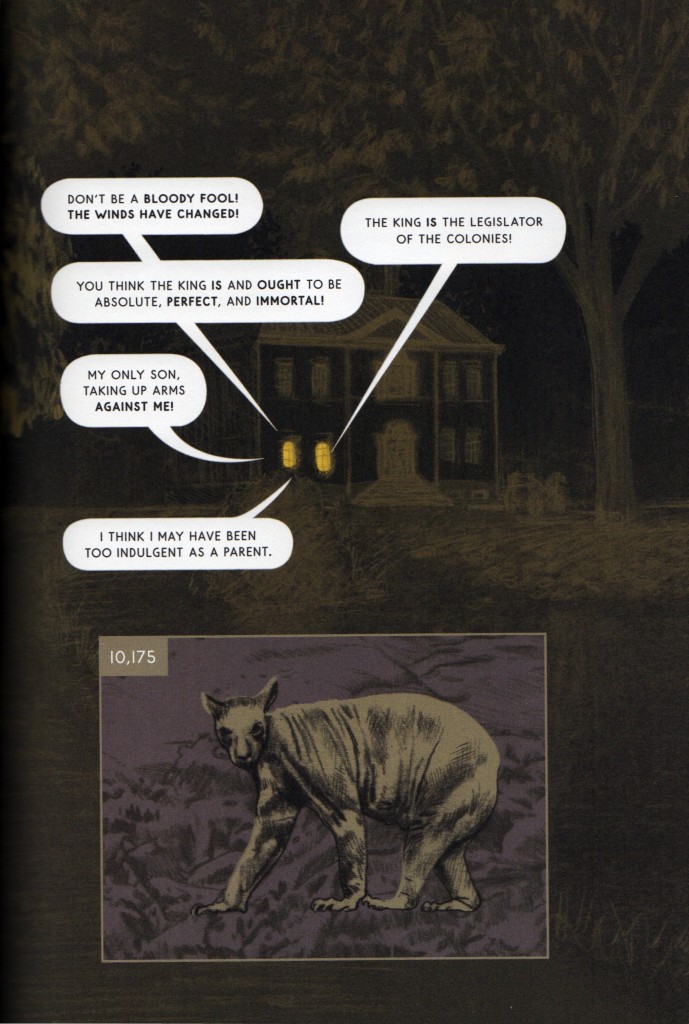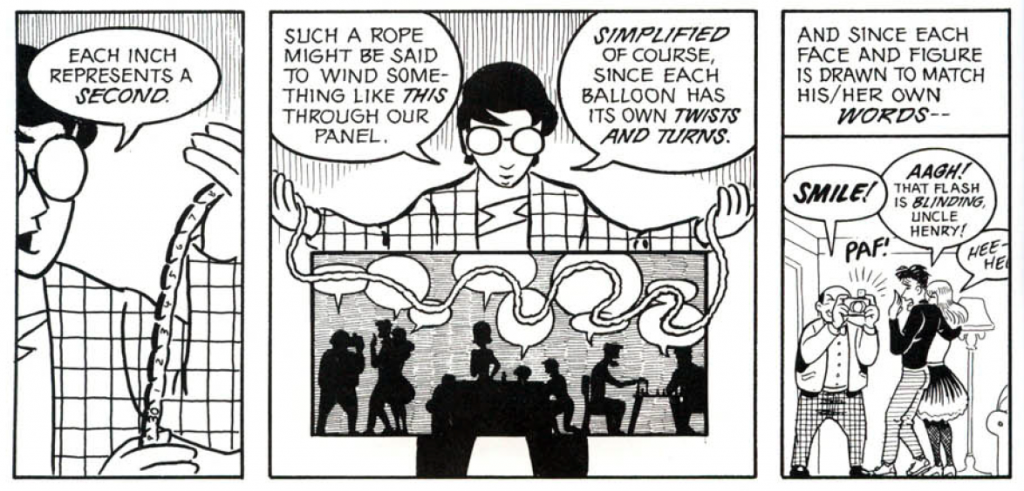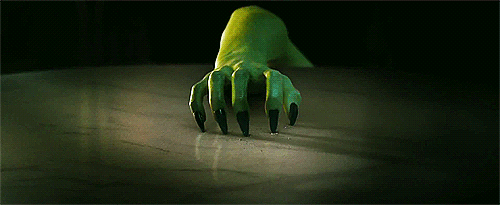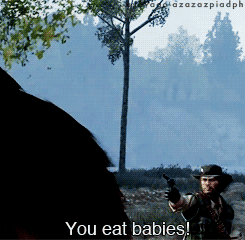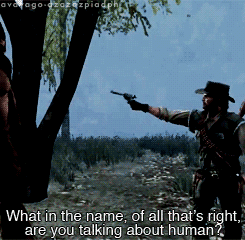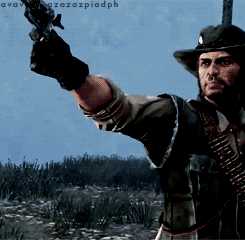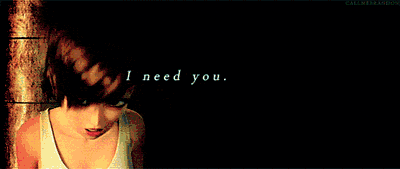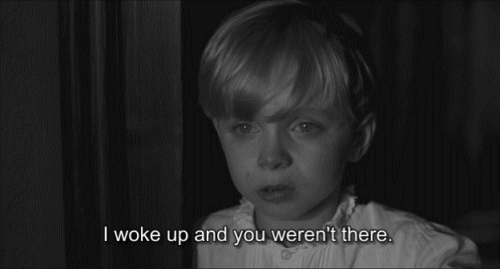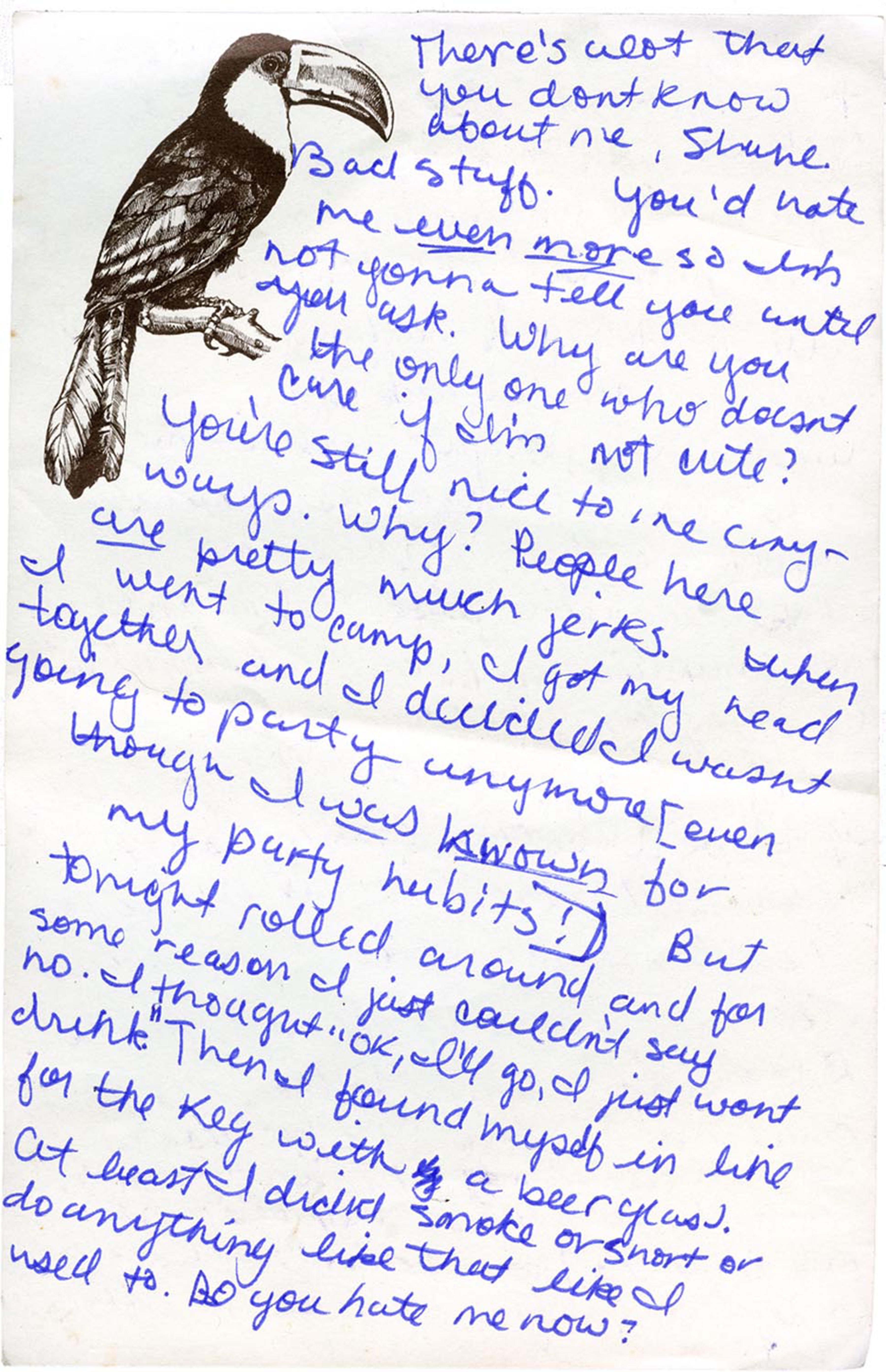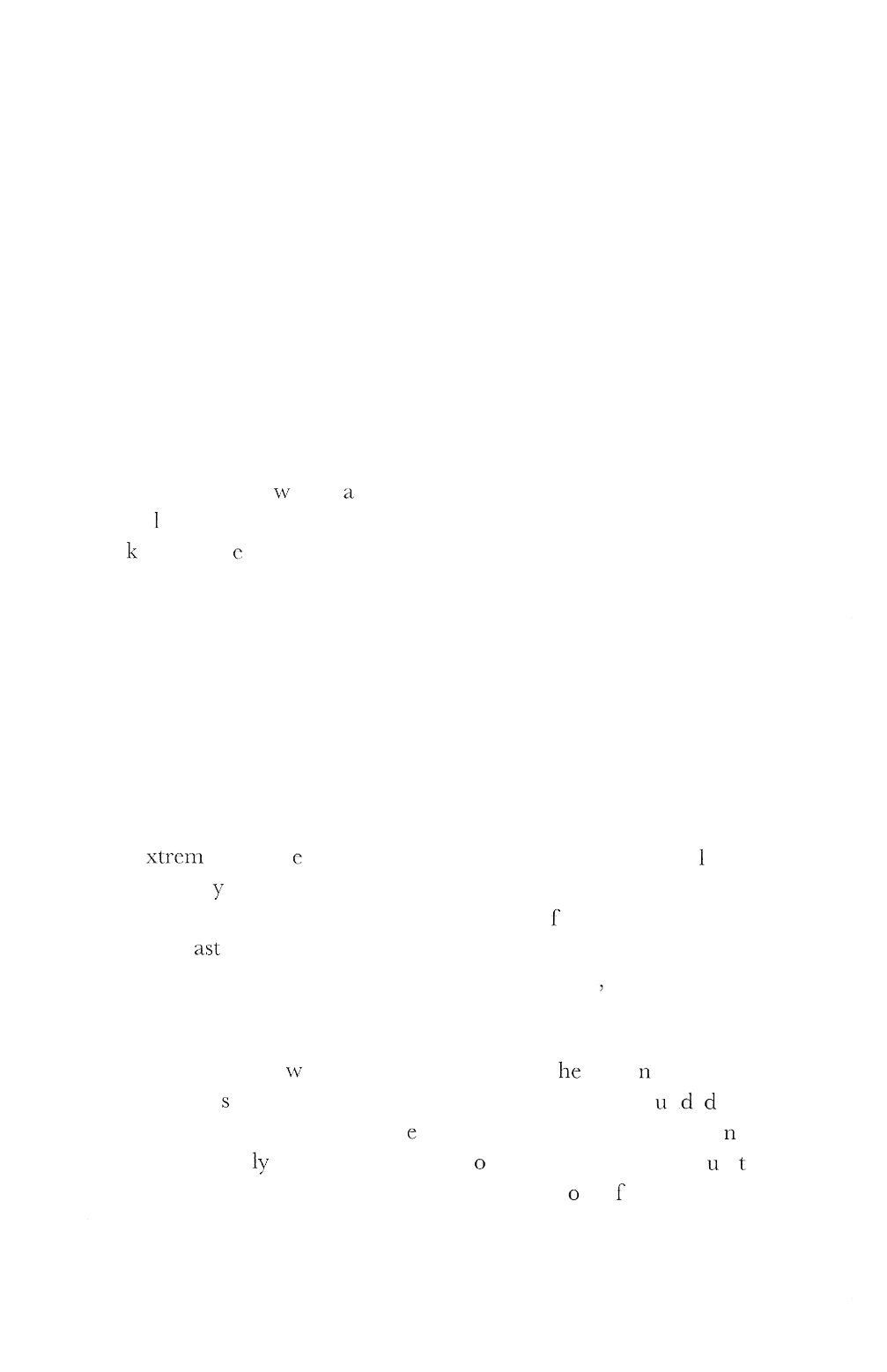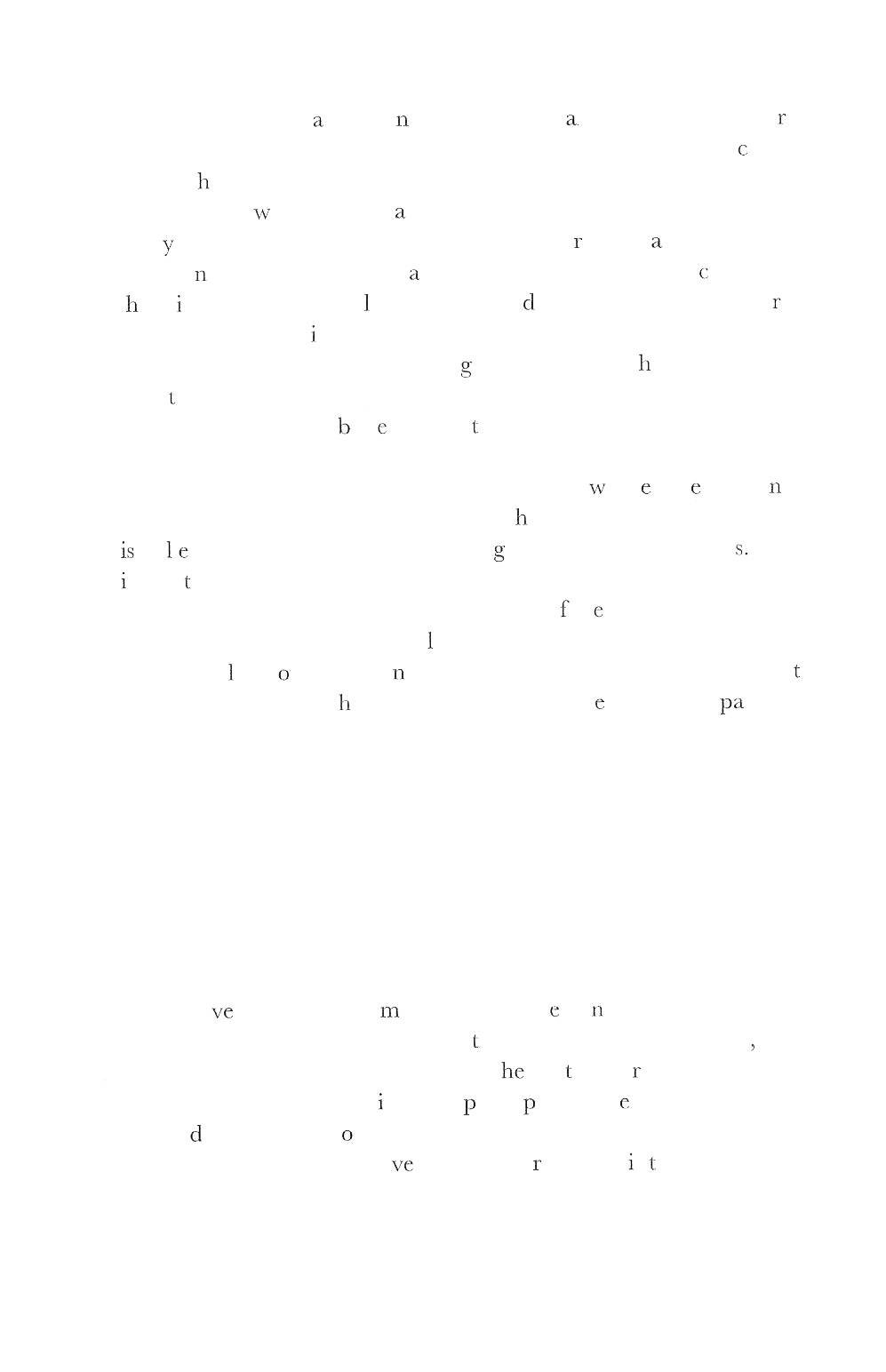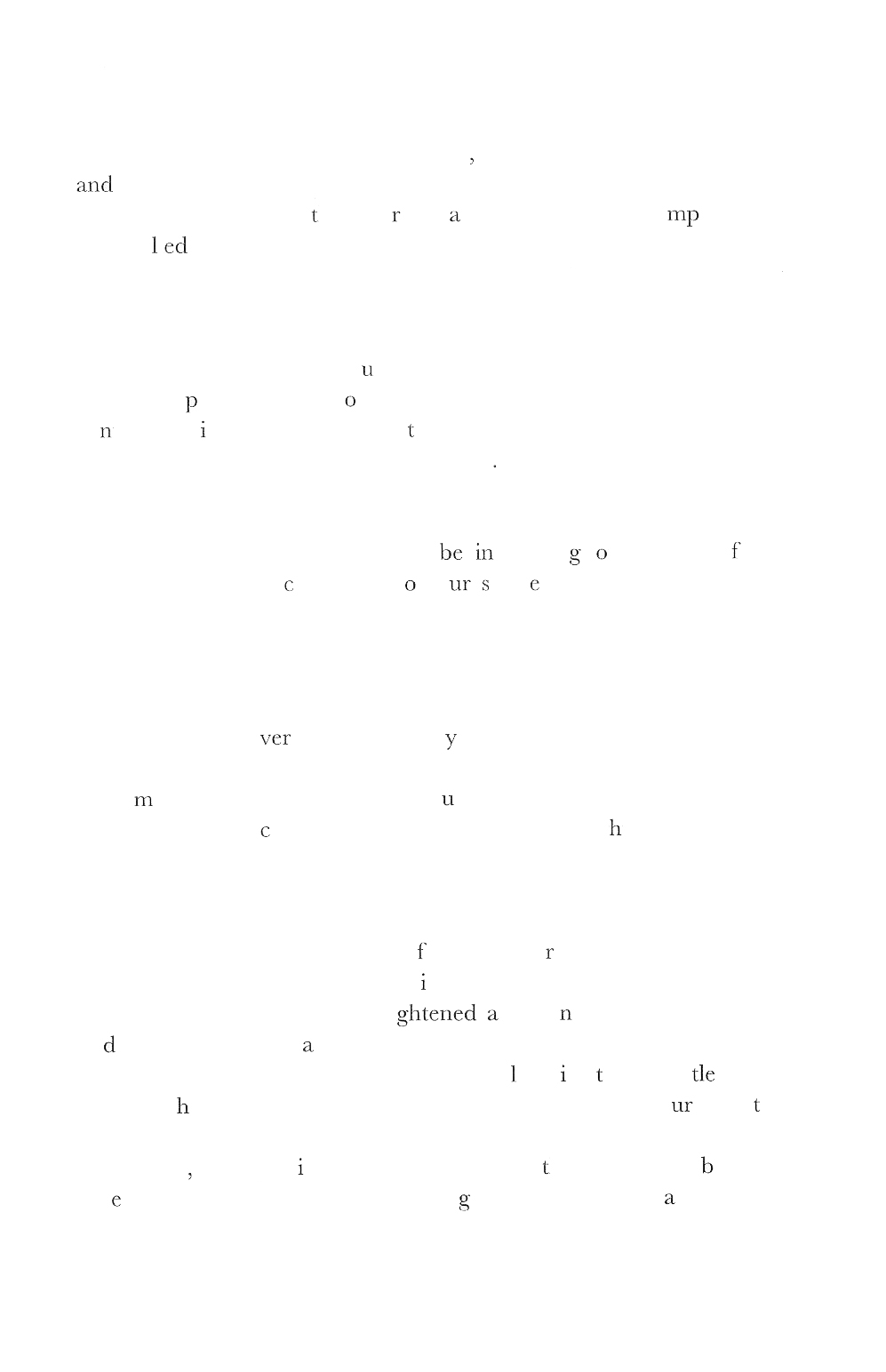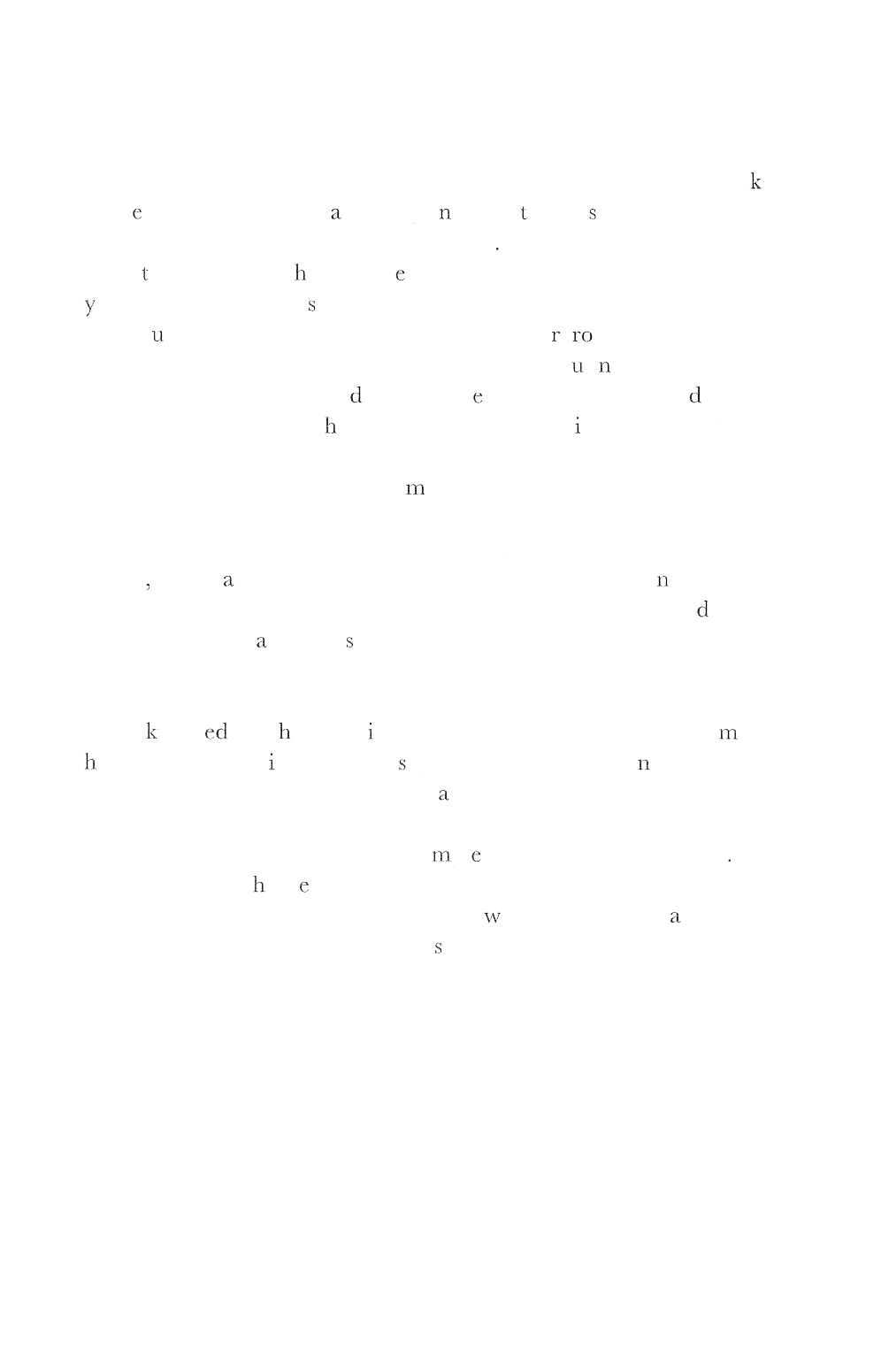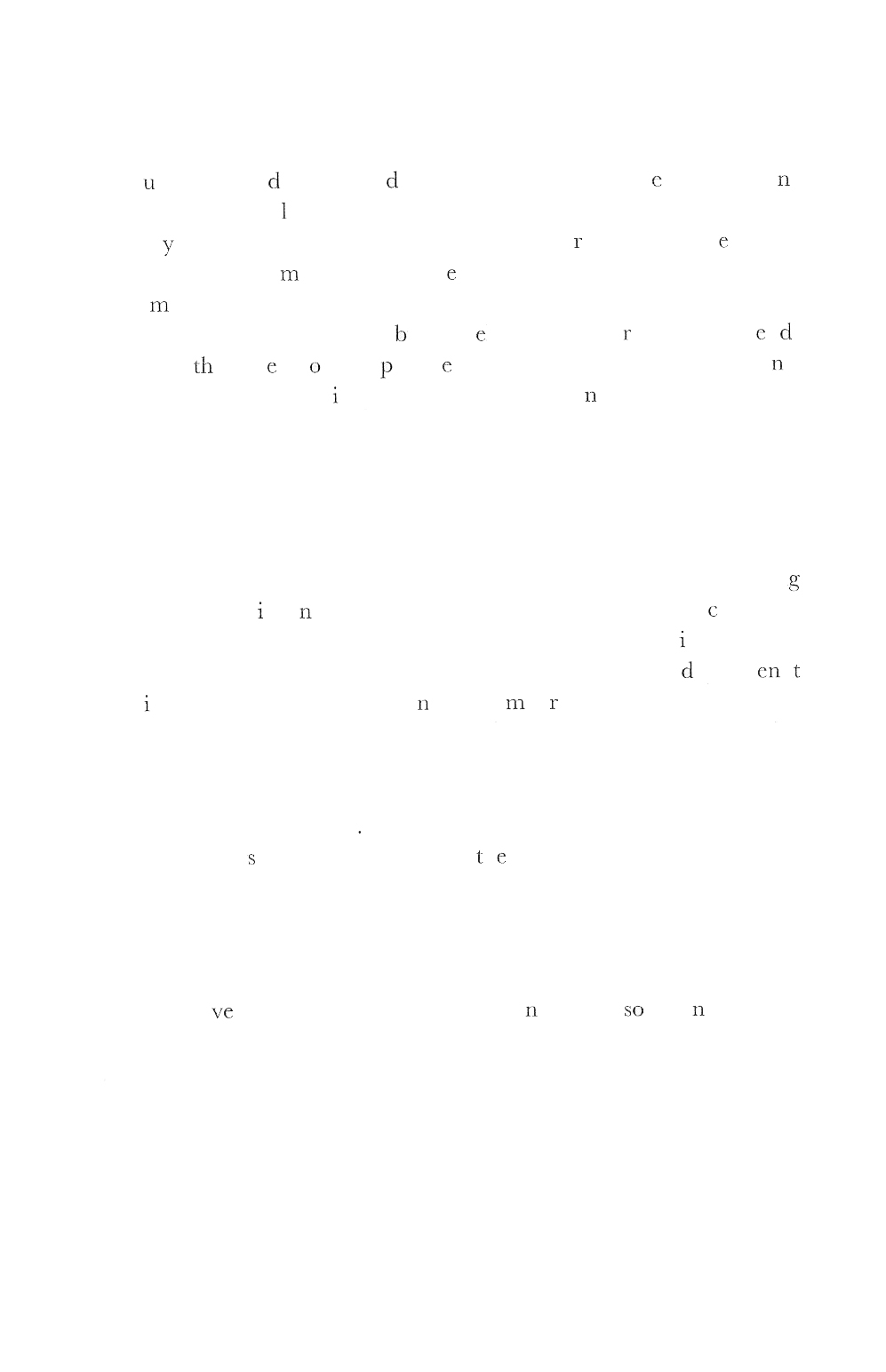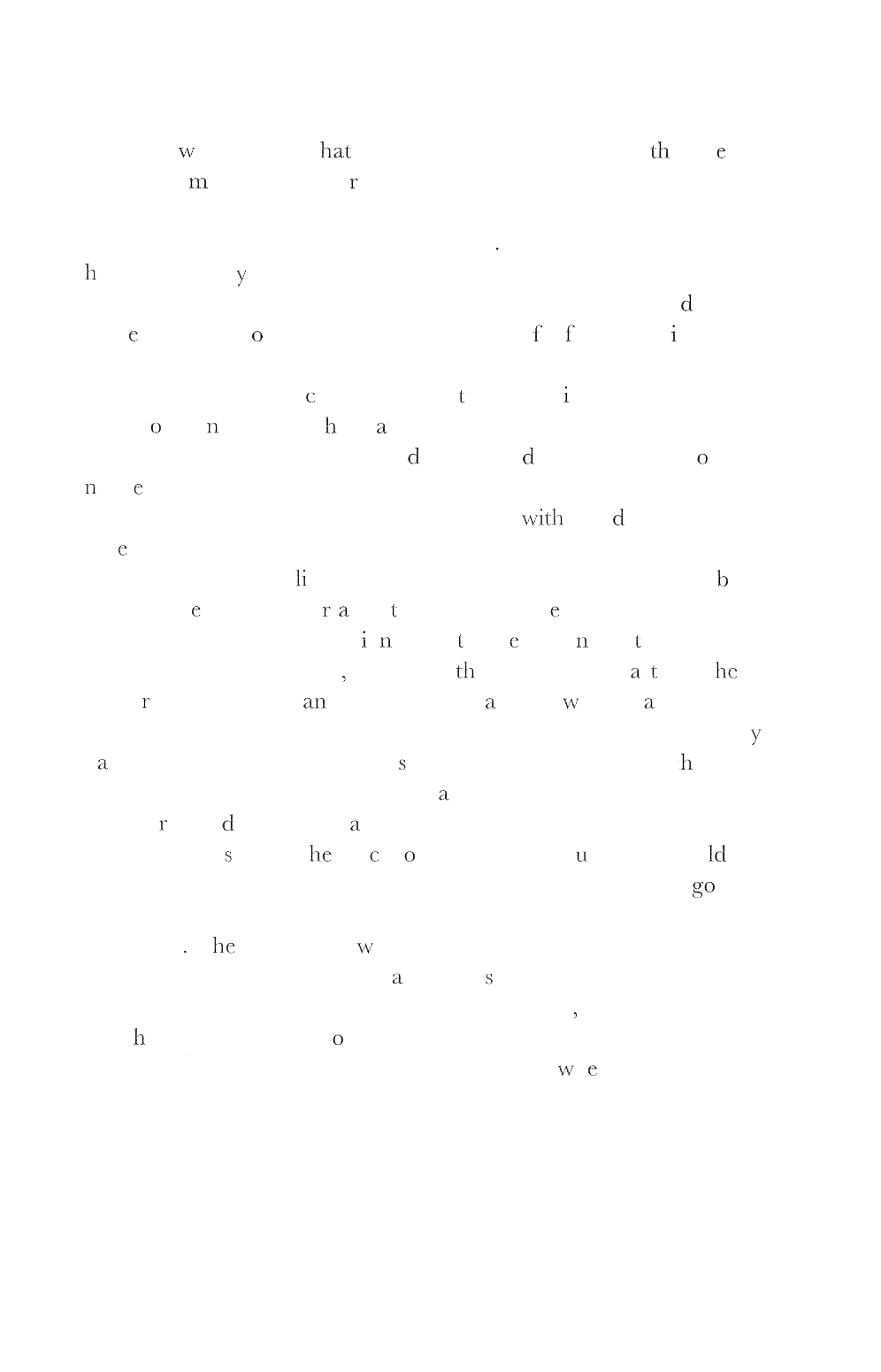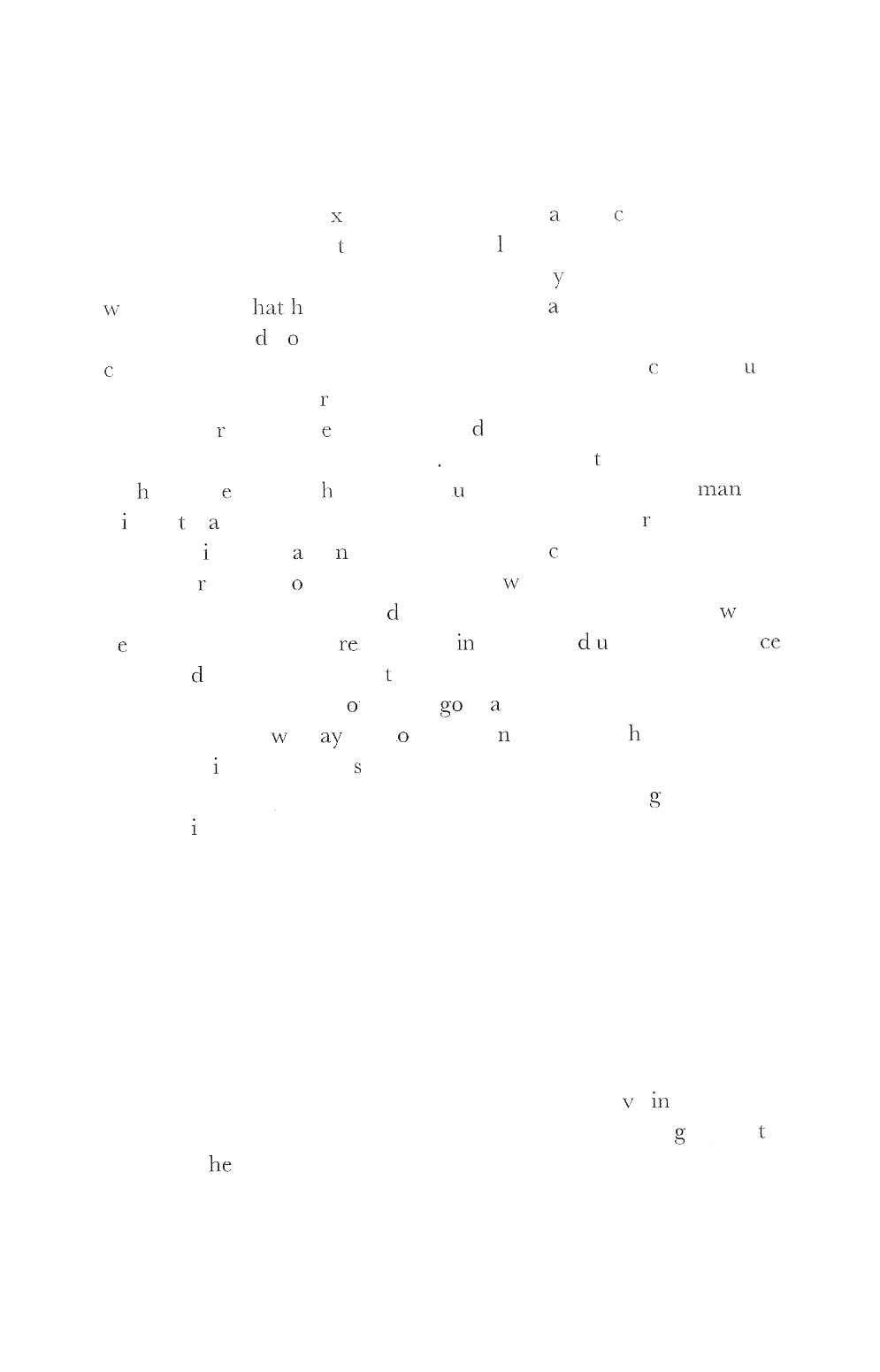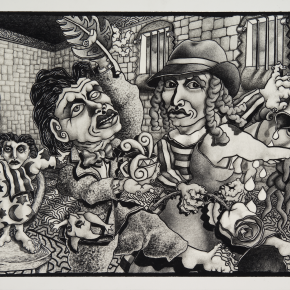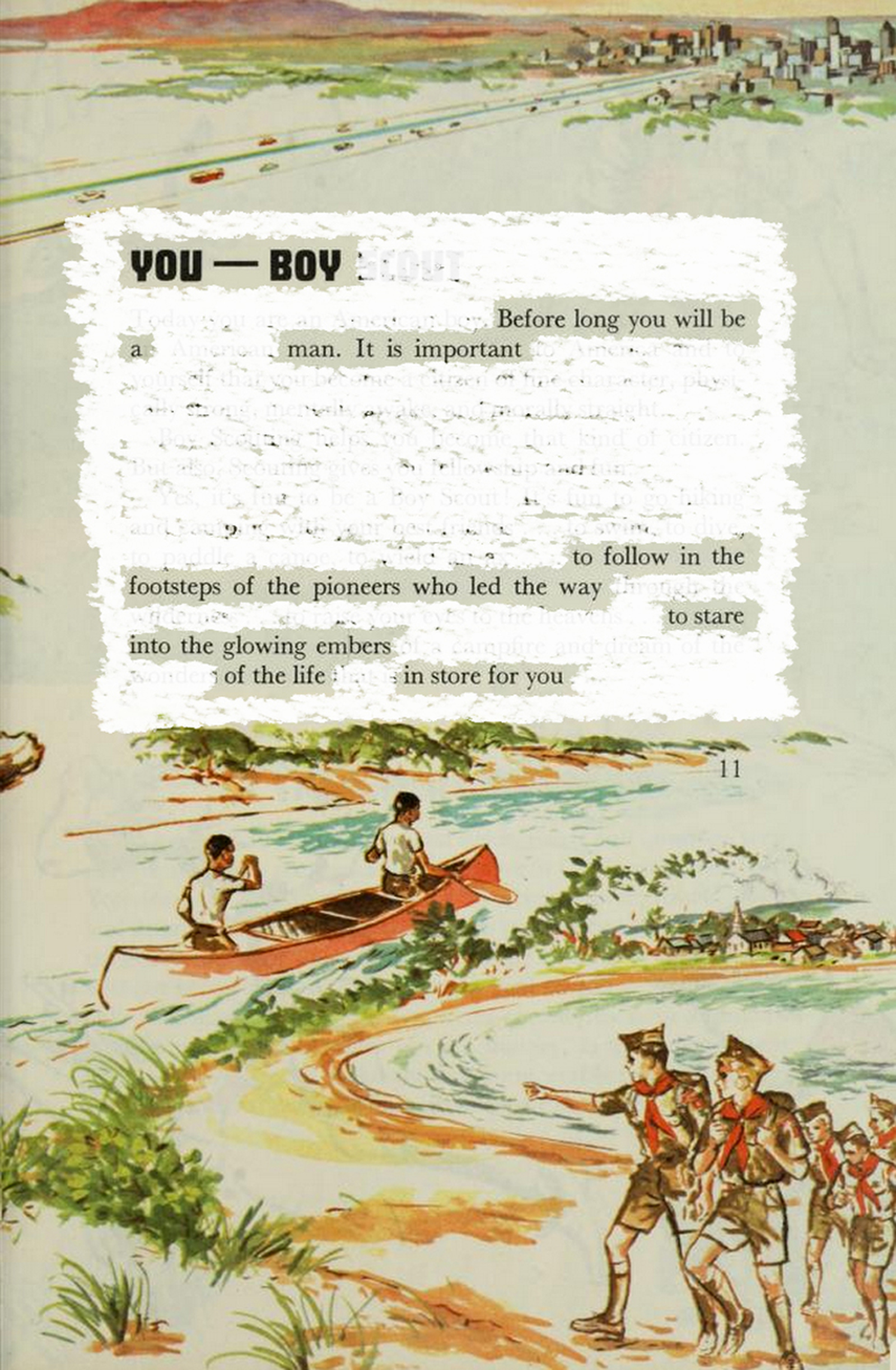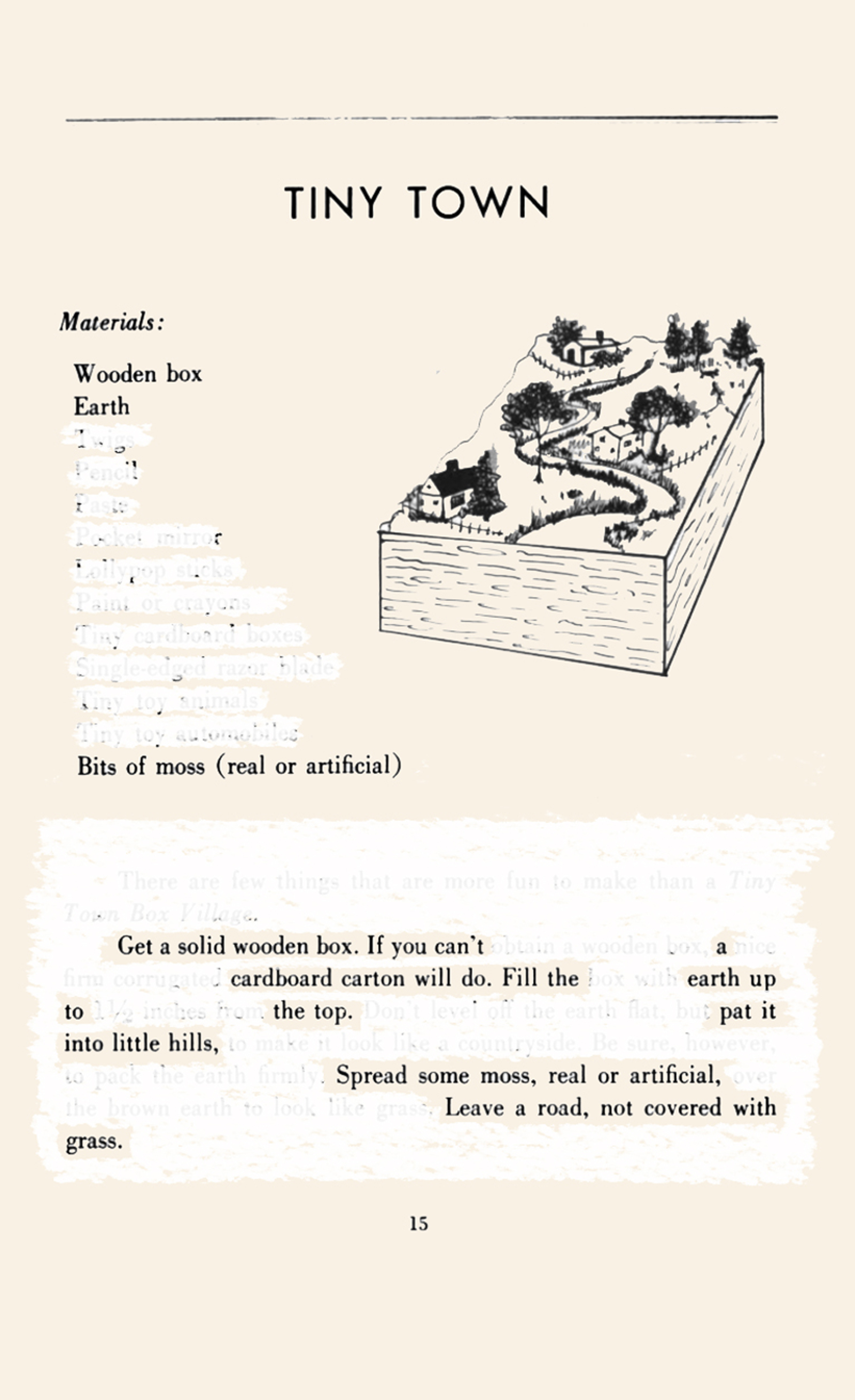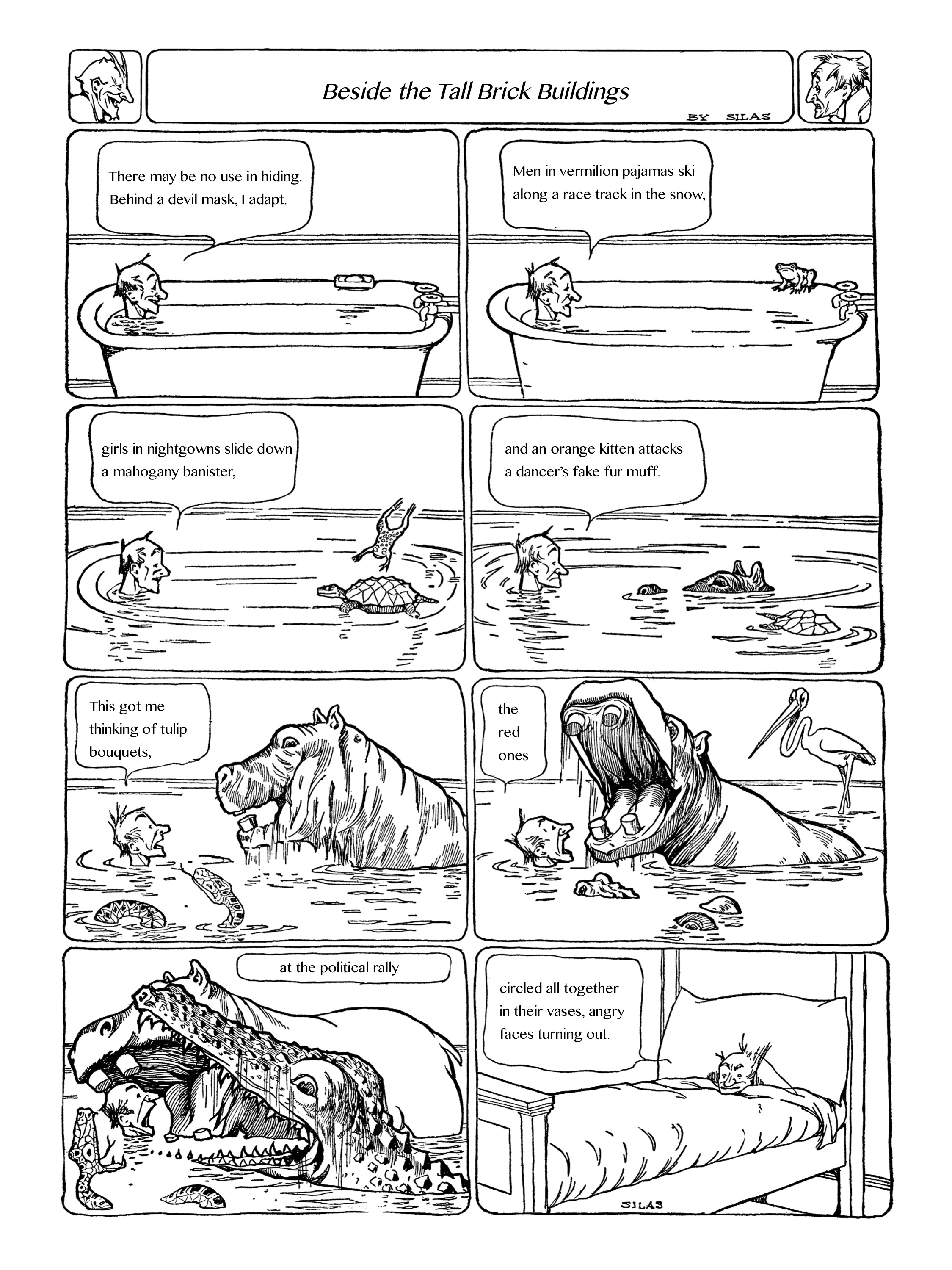Criticism Forum/ Johannes Göransson, Ryan Brooks, Stephen Burt, and Rachel Greenwald Smith
:: Introduction ::
In the Fall 2014 Issue, The Account published a manifesto by Rachel Greenwald Smith entitled “Six Propositions on Compromise Aesthetics.” In that piece, Greenwald Smith highlights the contradictions in the belief held by many contemporary writers and critics alike that art is “at its most socially relevant when it forges compromises between strategies traditionally associated with the mainstream on one hand and those associated with experimental departures from the mainstream on the other.” Notably, she suggests that “compromise” is “symptomatic” of the emergence of neoliberal thought over the past thirty years. And, given this fact, we should be cautious of celebratory claims that poetry has found a more “fertile” ground between avant-garde and traditional, arguably more accessible, forms. Her manifesto, true to its form and intent, incited considerable interest from those on both sides of the argument. The Account has convened a special forum on “compromise aesthetics” featuring responses by Johannes Göransson, Ryan M. Brooks, Stephen Burt, and of course, Rachel Greenwald Smith, who responds to her interlocutors.
– Davis Smith-Brecheisen, Guest Criticism Editor
:: The Intervention of Art’s Enchantment ::
Johannes Göransson
1.
The beginning of Jean Genet’s classic Our Lady of Flowers (translated incredibly by Bernard Frechtman) is the most beautiful writing I know:
Weidman appeared before you in a five o’clock edition, his head swathed in white bands, a nun and yet a wounded pilot fallen into the rye one September day like the day when the world came to know the name of Our Lady of Flowers. His handsome face, multiplied by the presses, swept down upon Paris and all of France, to the depths of the most out-of-the-way villages, in castles and cabins, revealing to the mirthless bourgeois that their daily lives are grazed by enchanting murderers, cunningly elevated to their sleep, which they will cross by some back stairway that has abetted them by not creaking. Beneath his picture burst the dawn of his crimes: murder one, murder two, murder three, up to six, bespeaking his secret glory and preparing his future glory.
A little earlier, the Negro Angel Sun had killed his mistress .… (Genet 51)
I love how Weidmann appears suddenly in the five o’clock edition like a vision—a little like how Billy Holiday appears suddenly in Frank O’Hara’s famous elegy “The Day Lady Died”—inaugurating a flight of fancy in which images keep multiplying and spreading. But of course in O’Hara’s poem, the sudden appearance comes at the end of the poem, steering us away from the quandary-inducing picking through of books and booze and transporting us into that deathy-sacred-erotic space of her whispering performance where we all stop breathing. In Genet, this is where the book starts, and the whole novel takes place in a deathy-erotic-sacred space of art. In Genet’s book, art’s enchantment is not limited to the memory; art—in the shape of crime, or crime as art—intervenes in, saturates all of life. It is not an escape from life but a transformation of life into something too much, too full, overdone. One might say that Genet never “stop[s] breathing” but goes on and on, and at the same time it is art’s necroglamorous dimension—the way it stops our breathing (as when Weidmann’s handsome, alluring image appears before us), it kills us.
This is why it is so hard to live in this world if you are contaminated by art; this society needs to exterminate art’s enchantment in favor of a “restricted economy” (as described by Georges Bataille) of utilitarian concerns.
There is no place for us in this functionalist world, except maybe in the night, if “night” (in Raul Zurita’s words) is “the insane asylum of plants.”
This is also why art is a crime, why enchantment is an intervention in a world of consensus and agency, a world where people make decisions and solve crimes. Art’s intervention is to ruin us.
2.
Weidmann appears and is immediately “multiplied”—first in the newspaper copies, then by being compared to a nun “and yet a wounded pilot,” and this wounded pilot leads to the doubling of the day (both as a September day and the day that Our Lady of Flowers is found out). His multiply multiplied face is then transported throughout the land to remind everyone of “enchanting murderers.” The key for me is the word “enchanted”—a term often associated with fairytales. In this book, the criminals are enchanting—that is to say, they are poetic like the prose style.
Genet’s prose style is wound around and around like the swaths of Weidmann—and the nun and the wounded pilot. One might say that it’s the very definition of “Baroque”:
From birth, the Baroque was destined for ambiguity, for semantic diffusion. It was the thick, irregular pearl—in Spanish barruco, berrueco, in Portugese barrocco—the rocky, the knotted, the agglutinated, density of the stone—barrueco, berrucco, or perhaps the excresence, the cyst, something that proliferates, at once free and lithic, tumorous, warty; perhaps the name of the hypersensitive, even mannered pupil of the Carraccis .… Finally … the Baroque is defined as “shocking bizarreness” (Littré) or as “outlandishness, extravagance and bad taste. (Sarduy 270)
I love how Sarduy’s own critical prose mimics the “thick, irregular pearl” of the baroque. As in Genet, here baroque is something that winds, swathes in layers, and “proliferates.” It is both the seemingly elevated and free, and the tumorous and warty. The key here is that artifice is not—as it is often viewed—the opposite of the bodily and “warty,” the abject, but rather is something that collapses such distinctions.
In Genet, after all, even a fart can become a beautiful, ornate, oriental “pearl” through the artifice-saturated lifestyles of the drag queens and criminals that populate his book—and are populated, created, generated by his fantasies in order, quite explicitly, to get himself off:
If he says, “I’m dropping a pearl” or “A pearl slipped,” he means that he has farted in a certain way, very softly so that the fart has flowed out very quietly. Let us wonder at the fact that it does suggest a pearl of a warm orient: the flowing, the muted leak, seems to be as milky as the paleness of the pearl, that is, slightly cloudy. It makes Darling seem to us a kind of precious gigolo, a Hindu, a princess who drinks pearls. The odor he has silently spread in the prison has the dullness of a pearl, coils about him, haloes him from head to foot, isolates him. (Genet 15)
It is both ridiculous and beautiful, artless and ornate—it ruins such distinctions. The truly artful is tasteless, goes over the top, becomes farce, becomes porn, goes too far. I love how the small, ephemeral fart here becomes not just one valuable but multiple pearls, grows to become an entire “orient” and its entire treasure trove of exotica before finally turning the pimp Darling into a kind of saint (like Weidmann), haloed by the (f)art.
3.
This tacky, artless over-artfulness is in much modernist discourse dismissed as kitsch—as something tasteless. But Timothy Morton has made a point of how kitsch’s tacky, slimy quality turns it into a kind of abject:
The Ancient Mariner and Frankenstein are gothic and tacky. The tacky is the anaesthetic (unaesthetic) property of kitsch: glistening, plasticized, inert, tactile, sticky—compelling our awareness of perception; too bright, too dull, too quiet, too loud, too smelly, not smelly enough—subverting aesthetic property. Coleridge respected the tacky; he appreciated the ethics of calling sugar the crystallized blood of slaves. So did Mary Shelley: her monster story undermines the myth of Romantic genius. Both stories are about excessively material stuff, art-matter as pure extension. (Morton 158)
It seems to me that Morton is wrong to call this “anaesthetic”; rather, it seems over-aesthetic, an artfulness that cannot be contained by good taste—the defense of a restricted society, the restraint of consensus culture—but instead overwhelms us, infiltrating every aspect of our lives. It is this “art-matter” that draws me into art, that enchants me, and it’s the intervention of art’s matter—as an enchantment, which can transform a fart into a pearl—that I am interested in exploring, in this essay and in my own poetry.
Unlike the more standard politics (subverting gender norms, critiquing the patriarchy, etc.), art’s matter intervenes in our life like the sudden appearance of Weidmann’s killer mug:
Beyond its cuteness (a reified version of Kantian beauty), an element in kitsch ecological imagery maintains this abjection, a formless, abject element, Bataille’s informe .… The bourgeois subject would rule forever if fascination and horror always resulted in spitting out the disgusting object. Ecological art is duty bound to hold the slimy in view. (Morton 159)
I would add that it’s not just “ecological art” that should “hold the slimy in view.” It is art’s role in a hygienic society devoted to a kind of functionalism that runs counter to art’s shitty matter. Art is extreme, but in a consensus culture, extreme art becomes “kitsch.”
4.
What makes me write about Genet and the baroque? To me, this vein of art—the bad taste of artifice—is at the heart of so many poetry discussions. It bubbled up in Stephen Burt’s discussion of the “nearly baroque” (almost in bad taste, almost over the top, almost enchanting) (Burt, “The Nearly Baroque”). And in a sense it’s also the nameless other of his “New Thing” essay, which posited a new standard of taste in prosaic, un-ornamental poetry against “candy surrealism,” which has no standards (Burt, “The New Thing”). Again, it’s the sugar that revolts us as if it were shit.
Shit and sugar, shit and sugar is the mantra of this screed.
It is hard to read a single issue of the Writer’s Chronicle (a journal for MFA programs, thus invested in teaching students, budding poets, to be tasteful) or some such journal without being reminded of the importance of not going too far. This makes sense since the quietist pedagogy (it was always more of a pedagogical stance than an aesthetic movement) always focused on restraint—you have to earn the images, write what you know, etc. In one recent article in the Writer’s Chronicle, Gregory Orr espouses Wordsworth’s famous anti-kitsch manifesto, the preface to Lyrical Ballads (1798):
Wordsworth rescued lyric from elitism by saying that the language used in poems isn’t a special, flowery language reserved for special people or a special class of people. Instead, he insisted it was “a selection of the real language spoken by men” (and women). Poetry was just us, speaking a little more intensively or rhythmically than we ordinarily speak, but not in some special language only available to social or economic elite. (Orr)
This argument seems to be repeated over and over: the fanciful, the “flowery,” the “gaudy and inane”—in other words the too-poetic, the baroque—is somehow evil, somehow associated with the upper class, with elitism, even though it is tasteless to write flowery language—and taste tends to follow money.
Too often, somehow the too-poetic—“effete” poetry—is made evil, exclusive, and elitist in its “preciousness.” How can it be, I wonder, that Jean Genet—orphan, prostitute, vagabond—who wrote Our Lady of the Flowers while in jail can be an exemplar of an exclusive, economically elite style of writing?
5.
The answer is quite simple: the eliteness of the effete is a different kind of eliteness from the economic privilege that Orr stresses. It is true that the baroque too-muchness of some art—“heavy” with symbols and art’s stuff—is elite in a certain way. Not because its author or reader has to be rich, but because such art demands more of us, demands not “difficulty” or “accessibility” (both notions that depend on a new-critical, interpreter-in-charge model of reading), and most of all: not the bullshit capitalist idea of “easy communication” (achieved, I assume, after reading one of those “ten ways of easier communication” books that businessmen tote around in order to rise in the rungs of the corporate ladder).
No, it’s an idea of art that overwhelms and “enchants,” appears before us like a vision and saturates our lives like newspapers magically “strewing death” into our lives (Genet 52). Of course, Genet constantly explores the connection between art and the antisocial, poetry and criminality, as well as the aristocracy of art. So perhaps it makes sense: “Nobility is glamorous. The most equalitarian of men, though he may not care to admit it, experiences this glamor and submits to it” (Genet 194). Art’s necroglamorous “nobility” demands that we “submit” to it. Our relationship with art is not egalitarian, with its accompanying bourgeois idea of progress. It’s not “easy” and it’s not tasteful. Art’s matter infiltrates, infects, ruins us.
It is in a sense too easy.
It overtakes us.
“Come on over and do the twist!” (K. Cobain)
“And I fill my nose with snow and go Rimbaud, / Go Rimbaud, go Rimbaud,/And go Johnny go, and do the watusi, oh do the watusi” (P.Smith)
We will not rise in the corporate ladder.
There is no place for art in our society, but art persists as a crime.
Sugar and shit, sugar and shit.
We live in a time when academics write about conceptual poetry with its anti-poetic stance, which is also based on an anti-baroque model (poetry is so over the top, excessive, time to write poetry without the poetry, poetry that doesn’t even have to be read), according to which poetry is dead. That is to say, whether you subscribe to a quietist model of “earn your images” or a conceptual model that also distrusts poetic language, it is tasteless to be poetic. [i] And if conceptual poetry says that poetry is dead, I answer that of course it is. Both conceptual poetry and quietist pedagogy oppose the enchantment that is art’s matter, want to discipline it into a dull and “easy” communication. Both thrive on a compromise-culture aversion to the kind of enchantment we have to submit to. Compromise culture wants us all to remain interpreters-in-charge, to not have to be shipwrecked by the intervention of art’s matter.
[i] And as Daniel Tiffany argues in his book My Silver Planet, kitsch finds its origin in the poetic, which runs counter to the progress-oriented bourgeois idea of “literature” and the writer as “man speaking to men.”
Works Cited
Burt, Stephen. “The Nearly Baroque.” Boston Review. 11 April 2014. Web. 2 April 2015.
—–. “The New Thing.” Boston Review, 1 May 2009. Web. 2 April 2015.
Genet, Jean. Our Lady of the Flowers. Trans. Bernard Frechtman. New York: Grove Press, 1991. Print.
Morton, Timothy. Ecology Without Nature: Rethinking Environmental Aesthetics. Cambridge, MA: Harvard University Press, 2007. Print.
Orr, Gregory. “Foundational Document and the Nature of Lyric.” The Writer’s Chronicle. October/November 2014. Web. 2 April 2015.
Sarduy, Severo. “The Baroque and Neo-Baroque.” Baroque New Worlds: Representation, Transculturation, Counterconquest. Eds. Louis Parkinson Zamora and Monika Kaup. Durham, NC: Duke University Press, 2010. Print.
Tiffany, Daniel. My Silver Planet: A Secret History of Poetry and Kitsch. Baltimore: Johns Hopkins University Press, 2014. Print.
Johannes Göransson is the author of six books, most recently The Sugar Book (Tarpaulin Sky Press, 2015), and the translator of several works in translation, including books by Aase Berg, Henry Parland, and Johan Jönson. He publishes Action Books and teaches at the University of Notre Dame.
:: Conflict before Compromise: A Response to Rachel Greenwald Smith ::
Ryan M. Brooks
Rachel Greenwald Smith’s “Six Propositions on Compromise Aesthetics” can be understood as an attempt to think through the internal connection between U.S. literary post-postmodernism and the neoliberal turn, two cultural shifts that have been widely discussed but less often discussed together. Smith suggests that these shifts converge in what she calls “compromise aesthetics,” the belief that forging “compromises” between “mainstream” and “experimental” literary strategies makes a text “socially relevant,” a belief that displaces the old idea that texts are relevant precisely to the degree they refuse to compromise (1). As Smith argues, this new aesthetics reproduces the logic of neoliberalism in several ways, beginning with its tendency to privilege stylistic accumulation and the “entrepreneurial capacity to marshal resources effectively” more than “social or political form of alliance” (5). Like “the neoliberal model of the entrepreneur,” moreover, critics and writers in this mode tend to see “the individual as both self-consciously constructed and immensely valuable” (7), a compromise between the postmodern critique of the subject and the attempt, in both lyric poetry and realist fiction, to evoke speakers or characters “who seem like real people” (7). Finally, just as neoliberals imagine the end of ideological disagreements about the value of different political systems—to be replaced by “‘the endless solving of technical problems’” (“The End of History?” 25 qtd 16)—these critics and writers imagine the end of ideological disagreements about the value of different literary styles—to be replaced by the endless solving of aesthetic “technical problems.”
One way to synthesize these elements is to suggest that, like neoliberalism, compromise aesthetics imagines a world in which every person is an “entrepreneur” or, as Foucault famously put it, an “entrepreneur of himself” (226), a vision which reframes social relationships in terms of personal choices and personal characteristics. Smith’s concept of compromise aesthetics is important, then, because it points to ways this logic plays out in contemporary criticism and the literature that aspires to move “past” postmodernism. At the same time, I suggest that Smith doesn’t fully account for the specific discursive work performed by this logic, which serves to personalize conflicts otherwise irreducible to the personal, including both material and ideological conflicts, and thus symbolically resolve those conflicts. Disavowing structural antagonism in this way is the gesture that all neoliberal discourse must make, insofar as “neoliberal” signifies the embrace of liberalized markets and market logic, and insofar as this attitude has flourished at the same time that economic inequality—the cause and effect of the antagonism known as class—has intensified. Identifying how contemporary cultural forms make sense of such conflicts is thus crucial not only for understanding their relationship with neoliberalism, but also for trying to imagine alternatives to this discourse, in both art and politics.
At various moments, however, Smith implies that it is “compromise” itself—rather than the disavowal this “compromise” performs—that makes this aesthetics a “symptom of the cultural entrenchment of neoliberalism” (3). Although I strongly agree that we can see evidence of the neoliberal turn in the abandonment of the traditional conflict between “mainstream” and “experimental” literature, as Smith suggests, it’s important to note that this disavowal doesn’t always take the form of “compromise” between mainstream and experimental techniques. Indeed, as I argue elsewhere, in an essay on the Jonathan Franzen/Ben Marcus debate, this disavowal may also take the form of an insistence that, since literary tastes are a function of what “kind of person” (Franzen 241) one is, writers should not compromise, but should instead produce as many different kinds of writing as there are “kind of person” or “kind of reader” (Marcus 51). [ii]
More to the point, neoliberalism cannot be reduced to the various political positions “compromise” is said to embody in this essay. These commitments include a denial of historicity—“the appeal to inevitability and permanence that is at the heart of the very concept of compromise” (Smith 2)—and a denial that disagreements still exist, that there continues to be “global conflict” and “racial unrest” (12). In my view, neoliberalism—as an active political force and not simply a utopian thesis about the “end of history”—does not so much deny that change is possible or that people continue to disagree as find ways to make these disagreements impossible. How can we disagree when, to put it as crudely as Franzen, our disagreements are really just a function of what “kind of person” we are?
For a more high-tech example of this logic, in fact, we can look at an instance of compromise aesthetics cited by Smith, David Foster Wallace’s “E. Unibus Pluram: Television and U.S. Fiction,” which has been widely read as an attempt to forge a “postironic” literary ethos (Konstantinou 85). Wallace’s oft-cited diatribe against postmodern irony doesn’t actually reject the social vision reflected by this irony—“theoretical anti-foundationalism” (Konstantinou 84), or the idea that the world is “constructed” (Wallace 180)—and he clearly sees himself as extending postmodernism’s “genuine socio-artistic agenda,” its attempt to “transfigure a world of and for appearance, mass appeal and television” (171). His argument, however, is that in an era when postmodern irony has been “co-opted” (177) by “televisual culture” (172), it may actually be contributing to TV’s cultural dominance: “the most frightening prospect, for the well-conditioned viewer, becomes leaving oneself open to others’ ridicule by betraying passé expressions of value, emotion, or vulnerability .… The well-trained lonely viewer becomes even more allergic to people. Lonelier” (181). In response, Wallace issues his famous call for writers “who have the childish gall actually to endorse single-entendre values. Who treat old untrendy human troubles and emotions in U.S. life with reverence and conviction” (192–193).
Not only does the very instrumentality of Wallace’s critique make it seem like a peculiarly ironic form of “postirony,” but, as Konstantinou notes (without quite teasing out the consequences of this observation), the belief he calls for is a belief “emptied out of specific content” (85). Wallace is not telling us what to believe, in other words, but asking us to be “believers” (Konstantinou 104). By this logic, it doesn’t really matter what we believe—which “single-entendre values” we “endorse”—as long as we believe something. Rather than a rejection of postmodern irony, then, it seems more accurate to call this a personalized, neoliberal version of this irony. Postmodern irony suggests that we can’t disagree because our beliefs are just the products of our positions within competing systems of meaning (grand narratives, language games, ontological worlds, etc.), a logic that requires us to imagine that if we were in different systems, we’d no longer believe what we believe and thus no longer disagree. [iii] Wallace’s neoliberal irony suggests that we can’t disagree because belief is just a relationship between the self and the self’s own “expressions of value, emotion, or vulnerability” and that no one iteration of this relationship is more valuable than any other (even if belief or “sincerity” [178] itself is more valuable than cynicism).
Smith actually provides an apt summary of this logic when she writes that compromise aesthetics celebrates works that “affirm the fundamental existence and importance of individual subjective experience in general even if [these] works demonstrate skepticism toward any individual subject’s reality as universal” (7, italics original). Here, again, though, she suggests that this is a distinctly neoliberal logic not because of its personalizing disavowal of antagonism—its untenable “skepticism,” the fact it denies the universalizing nature of our judgments even as it makes such judgments—but because it represents a “compromise” with another neoliberal value, in this case the “neoliberal primacy of being an individual person (constructed or not)” (7). Although I believe Smith is exactly right when she describes contemporary literature’s tendency to invest “the personal” with “deep and specific value” (9), it’s important to remember that, just as neoliberal aesthetics cannot be reduced to a denial of historical contingency, it also cannot be reduced to a celebration of “the individual,” as seems to be suggested here. [iv]
To see why this is true, we can look again at Wallace’s essay, which, on one hand, does reflect the literary-historical shift Smith describes. Whereas self-consciously “post-postmodern” writing tends to understand social relationships in terms of “the personal, and by extension, the emotional” (6) (and, we might add, “the ethical”), postmodern writing tended to understand social relations in terms of impersonal systems of mediation and power and, following from this, tended to imagine that political action meant intervening in these systems, including the systems that construct subjects. As Smith puts it succinctly: “Postmodern aesthetics saw an insistence upon the artificiality of the subject as a form of critique. Postmodernist works therefore tended to minimize the affective pull of the individual by emphasizing their artificiality” (9). We can see this representational change enacted in Wallace’s observation about the “well-conditioned” and “well-trained viewer” quoted above: ultimately he is less concerned with the technologies that have “conditioned” and “trained” these viewers than with their emotional experiences, the fact they’ve been made “lonelier.”
As this lament also makes clear, however, this commitment to “individual subjective experience” (Smith 7) does not necessarily translate into a celebration of what Wallace calls “the nobility of individualism” (174). Indeed, the whole force of “E. Unibus Pluram” is, as the title suggests, to decry the atomization of U.S. life, the “Joe Briefcase-type world that shifts ever more starkly from some community of relationships to networks of strangers connected by self-interest and contest and image” (154). In protesting irony’s “tyranny” (184), Wallace explicitly rejects the counter-culture’s commitment to non-conformism (because it has been co-opted by ironic TV advertising) and the “conservative” belief that “the discerning consumer instincts of the little guy would correct all imbalances if only big systems would quit stifling his freedom to choose” (185). Thus, we see that Wallace’s social vision is importantly different from the stereotypical right-wing insistence on personal liberation within a market framework—the insistence that, to quote Philip Mirowski quoting Slavoj Žižek, “You are free to do anything as long as it involves shopping” (421).
What makes Wallace’s aesthetic still a neoliberal aesthetic is not, then, an antisocial individualism but a different kind of “compromise”: his tacit acceptance of the premise that capitalism’s problems can be addressed at the level of personal values and relationships. That is, just as his call for “single-entendre” “‘anti-rebels’” (192) disavows ideological antagonism by turning belief into a personal identity, his ideal of a nurturing “community of relationships” disavows the impersonal economic and political conflicts that tend to cut across such “communities,” including the antagonism between labor and capital that makes capitalist marketplaces possible in the first place. Rejecting this disavowal is essential not just for understanding neoliberalism—which has functioned, as David Harvey argued a decade ago, “as a political project to re-establish the conditions for capitalist accumulation and to restore the power of economic elites” (19, emphasis original)—but for resisting it, as acknowledging the irreducibility of these antagonisms is the first step to accepting that “economic elites” will only care about workers’ “old untrendy human troubles and emotions” (Wallace 193) if workers organize and force them to care. This vision is already being embraced in the emergent academic labor movement, especially among contingent faculty (who are an excellent resource if you are looking for “old untrendy human troubles and emotions”), and critics need to bring the same rigorous perspective to their analysis of contemporary literary culture. This is especially true if we are in search of genuinely radical texts, works whose aesthetics are—as Smith suggests of Rachel Kushner’s The Flamethrower (2013)—not just post-postmodern, but post-neoliberal.
[ii] “‘The Family Gone Wrong’: Post-Postmodernism and the Neoliberal Turn,” currently unpublished.
[iii] For an analysis of how “the redescription…of people who have different beliefs as people who are playing different ‘language games’ amounts to a repudiation of the idea that people actually have any beliefs,” see Michaels (189).
[iv] In her essay “Postmodernism and the Affective Turn,” Smith suggests that texts and discourses that attend to the “deindividualizing affective forces that bind humans to one another and to other species” (435) represent an important alternative to the commitment to “humanism and the insularity of the individual” (442) implicit in neoliberalism. Although attending to these “deindividualizing affective forces” may translate into more radical “new forms of consciousness” (441) than the community-mindedness on display in Wallace’s text—whether you believe this seems to depend on whether or not you find affect theory convincing—Wallace’s text also demonstrates that neoliberalism can accommodate many different forms of subjectivity and that, in fact, analyzing neoliberalism in terms of modes of subjectivity alone risks reproducing neoliberalism’s various disavowals of antagonism.
Works Cited
Foucault, Michel. The Birth of Biopolitics: Lectures at the College de France, 1978–1979. Ed. Michel Senellart. Hampshire, UK: Palgrave MacMillan, 2008. Print.
Franzen, Jonathan. “Mr. Difficult.” How to Be Alone: Essays. New York: Picador, 2002, 2003. Print.
Harvey, David. A Brief History of Neoliberalism. Oxford: Oxford University Press, 2005. Print.
Konstantinou, Lee. “No Bull: David Foster Wallace and Postironic Belief.” The Legacy of David Foster Wallace. Iowa City: University of Iowa Press, 2012. Print.
Marcus, Ben. “Why Experimental Fiction Threatens to Destroy Publishing, Jonathan Franzen, and Life as We Know It: A Correction.” Harper’s Magazine. October 2005: 39–52. Print.
Michaels, Walter Benn. The Shape of the Signifier: 1967 to the End of History. Princeton and Oxford: Princeton University Press, 2004. Print.
Mirowski, Philip. “Postface: Defining Neoliberalism.” The Road from Mont Pelerin: The Making of the Neoliberal Thought Collective. Eds. Philip Mirowski and Dieter Plehwe. Cambridge: Harvard University Press, 2009. Print.
Smith, Rachel Greenwald. “Postmodernism and the Affective Turn.” Twentieth-Century Literature 57.3–4. (Fall/Winter 2011): 423–446. Print.
—–. “Six Propositions on Compromise Aesthetics.” The Account: A Journal of Prose, Poetry, and Thought. Fall 2014. Web.
Wallace, David Foster. “E Unibus Pluram: Television and U.S. Fiction.” Review of Contemporary Fiction 13, no. 2 (1993): 151–94. Print.
Ryan M. Brooks recently completed his Ph.D. in English at the University of Illinois at Chicago, and he is currently the Postdoctoral Teaching Fellow in Contemporary American Fiction at Washington University in St. Louis. His work has been published in Twentieth-Century Literature and the critical anthology The Wire: Urban Decay and American Television (Bloomsbury Academic, 2009).
:: A Response to “Six Propositions on Compromise Aesthetics” ::
Stephen Burt
First, thanks to Rachel Greenwald Smith for the attention! “The Elliptical Poets” is almost twenty years old; sometimes I’m afraid it’s the only thing I’ve written that more than ten people will ever read. I don’t regret writing it, but I do recognize that its generalizations about some poets I liked in the 1990s (I do still like them) belong to a kind of story about how the arts change, a kind of story that we can see over and over, from generation to generation, in almost every art form in the Atlantic world since 1910, if not since 1789. It is the kind of story anatomized, and largely endorsed, by Mark McGurl for American fiction in his tome The Program Era, and it is the kind of story often told—with passion—about pop and rock music over the past 30-odd years of rock fanzines.
In this story, a set of artists who appear more or less traditional, more or less accessible to a large audience, and more or less financially successful (large institutions owe them a living), though perhaps in decline, face challenges from newer artists whose work is more difficult, stranger or angrier, incompatible with institutional expectations, and—at least apparently or initially—aligned with a politics of radical change. Usually those politics are on the left—like Jon Langford’s, Yoko Ono’s, or Ron Silliman’s—but sometimes they are rightist, like Ian Hamilton Finlay’s or Ezra Pound’s. Often these newer artists have an explicit program, with critical prose (if not a manifesto) stating shared social, as well as artistic, goals. These younger or newer artists make an impression: they appear to some third set of artists (most of them newer or less established) as a resource or a breath of fresh air; to critics as a Hegelian antithesis; to tastemaking editors as the next big thing.
To no one’s surprise, that third set of artists (most new, a few established) conduct experiments; some of them, magpie-like or bricoleurishly, try to take parts and techniques from apparently incompatible schools, and of course few of them have signed on to a complete five- or thirty-year-old program. One of those artists “breaks through”—does something that many critics, readers, listeners, recognize as imitable and remarkable, if not also marketable. It then becomes possible to regard that breakthrough artist, and her immediate peers, as a kind of Hegelian synthesis of the traditional, audience-friendly art and its tough, programmatic antithesis.
Two minutes after that happens, it becomes possible (whether or not it’s justified or appropriate) to regard the breakthrough artist as a sellout, diluting or de-politicizing or betraying the difficult artists’ original program. That’s what happened on the way from Kurt Schwitters and Marcel Duchamp to Stuart Davis and Barney Bubbles; from the Stooges and the Electric Eels to the Clash to REM and/or the Police; from Xenakis to Kraftwerk to New Order and/or Daft Punk; from Lyn Hejinian and Rosmarie Waldrop to C. D. Wright and/or Jorie Graham; from Alurista, or from Anzaldúa, to J. Michael Martinez (whose “Notes on Chic@Nceptualism” you should maybe go read).
It seems important to say—though it should be obvious—that these sorts of overviews and stories, in which difficult or uncompromising innovators are followed by less programmatic, more popular syntheses, do not have to imply particular judgments of value; nor does the way you feel about the story have to dictate what you think of the artists involved. It seems to me that Nirvana was great and the Police mostly execrable, though both were latecomers and popular synthesists. I’d rather reread Infinite Jest than re-tackle Gravity’s Rainbow. On the other hand, I prefer the Raincoats to the Clash. One artist in one art form might be a sellout, while another who occupies an analogous art-historical position (“the Nirvana of Britain,” “the Spanish Gertrude Stein”) might seem to give the masses just what the masses need.
Moreover, stories about movements, programs, and syntheses can also omit what’s most interesting in the individual artworks, whatever makes for differences in practice among the people who share a theory or program. (Does Rae Armantrout ever sound like Charles Bernstein? Did the Who ever sound like Pink Floyd?) Stories about schools and movements are never sufficient, though sometimes necessary. And almost any story of any art movement—the story of American experimental poetry, in and out of coffee shops and classrooms; the story of experiments and marketplaces in American fiction; the rise and fall of Algerian raï—can be told in a way that celebrates, or decries, the dispersion of their innovations, the dissolution of a tight program.
Rachel Greenwald Smith, unless I have misunderstood her, decries it. She finds in American Hybrid, Cole Swensen and David St. John’s much-noticed anthology, and in other reactions to the synthetic impulse in much 1990s and 2000s poetry—including my essay from 1998—a retreat from history, from analysis of political economy, from the social utility that (in her view) difficult poetry ought to sustain. She thinks my piece, and American Hybrid, endorses something called “compromise aesthetics,” which she defines as the claim that “contemporary art is at its most socially relevant when it forges compromises between strategies traditionally associated with the mainstream on the one hand and those associated with experimental departures from the mainstream on the other.”
This claim, Greenwald Smith says, is mistaken. It hives innovative techniques off from one another and from the social critique that once came with them. (Steve Evans objected to me on similar grounds 15 years ago.) It re-inscribes faith in the person, in the individual, exactly where such faith should not belong: art should challenge the capitalist model of autonomous, atomized individuals moving through space, maximizing utility, and making investments on their own. And it suggests that the dynamic history of innovation (in art, in politics, in anything) can reach an end.
I thought I was writing—I think I am still writing—about some poets who share some techniques and about some reasons you might want to read them; social relevance seems to me, at best, one reason. I have never claimed that compromises, in general, make art, in general, more “socially relevant,” in general, although I do think compromises and syntheses, in art and in politics, get a bad rap (more on that below). I do think that the synthetic poetry I’ve recommended, by Wright and Graham and Forrest Gander and D.A. Powell and the Thylias Moss of the 1990s, finds an accommodation with an idea of the person, and with an idea of lyric (they are, of course, historically linked ideas), that language poets and Continental avant-gardes held at arm’s length, or rejected outright. (What corresponds to “lyric” or to “the person” in the corresponding histories of avant-garde music, pop, and rock? The answers are melody, sung lyrics, and verse-chorus-verse song form).
But I do not see how this unstable and qualified return to the idea of the person, or the soul, or the individual, corresponds to a neoliberal “End of History,” or to a turbo-capitalist “Third Way.” If there is a consistent politics in the idea that we can remake lyric, can open it up to the last few decades of critique—and I am not sure whether there is such a politics, although I’d look for it first in C.D. Wright—it is not neoliberal, but simply liberal, or social democratic (not the same thing as “liberal” in other contexts, but compatible with it here), in the sense that Paul Wellstone, Elizabeth Warren, Richard Rorty, Martha Nussbaum, and Eleanor Roosevelt were and are liberals. This liberalism founds a vision of social justice (when it has one) on a notion of needy, volatile, unpredictable, widely differing individuals, produced by our cultures, our families, and our unjust economies, along with our DNA: it envisions meshes and networks made of individuals who—though never really autonomous—deserve a degree of autonomy and a measure of respect. That is the explicit politics of Wright’s One Big Self: Prisoners of Louisiana and—though challenged by our climate emergency—the apparent politics of Powell’s Chronic, for example.
If Rachel Greenwald Smith were arguing that my so-called “Ellipticals,” or Swensen and St. John’s flotilla of hybrids, could not be reconciled with certain flavors of antihumanist Marxism (because they do not fit any tight program; because they find value in imagined persons), or that they could not be reconciled to deep ecology (because they cherish human opportunity and a diversity of human voice), then I would agree and move on. And if she were arguing that “compromise aesthetics,” as she defines them, seems complicit with neoliberal nonsense (both neoliberals and “compromise” fans believe that history has a direction and that it favors autonomous individuals), then I would also agree, though I am not sure what critic and what art form endorses “compromise” in that sense. But she is arguing something more: she claims that Wright and Mark Levine and American Hybrid conform this “compromise aesthetics,” and that I endorse it. I do not think I do, nor that I did.
I do think there are people. Older or traditional artistic practice, in the 20th century, often presents itself as humanist, taking man or human beings or somebody (perhaps a white or a First World person) as the measure of all things; newer, more difficult artistic practice has often opposed that humanism, in the name of Marxism or of brute force. Take individual agency and feeling as one’s only source of value, and we may get stuck with the tragedy of the commons, watching the final glacier melt. But refuse to acknowledge anything like a human person as a source of value, and we may end up a nihilist, or worse; we might take “collective oppositional positions” with confidence (so Rachel Greenwald Smith quotes Göransson), but what would one favor, now that we know what one opposes? (Perhaps it’s “innovation.” Or “the Revolution”).
Other than deep ecology (which values what’s good for the Earth, not what’s good for people), and other than cultural-nationalist collectivisms (which value what’s good for “my people,” not what’s good for persons), I have some trouble finding a sense of value that does not assume, in some sense, that there are people, and that people have wants or needs, and that some source of value inheres in what people want or need. Political change, the kind that reduces childhood illness, raises the minimum wage, or gets us a few more yards toward justice for janitors, requires some attention to what actual, already-existing persons (voters, potential union members, child-care providers) believe and think and do (and earn). For me, the most serious challenges to critical points of view organized around individuals comes not from programmatic (post) Marxist positions, but from certain kinds of multiculturalism, which claim that voices and tastes cannot be reconciled if they have sufficiently distant cultural origins (on which please see Charles Taylor), and from deep ecology, which claims that you are part of the problem if you prefer people to trees.
But the “postmodernist” perspective that Rachel Greenwald Smith appears to prefer (her examples come from prose fiction, not from poetry) does not look like deep ecology, nor like a challenge to European-American, Atlantic, Western ideas of the subject; it looks more like 1890s naturalism, in which “the artificiality of the subject” receives emphasis, and “the affective pull of the individual” is “minimized.” Does she really want to go back to Stephen Crane?
It seems to me that Rachel Greenwald Smith has confused neoliberalism with liberalism. It also seems to me that she has confused my 17-year-old description of a moment in the history of poetry with a claim about the end of political and cultural history. In fact—and I never said otherwise—all things must pass: today’s synthesis becomes tomorrow’s thesis, to be stomped on, turfed out, and partially resurrected in its turn (if climate change doesn’t first do everyone in).
When I wrote that essay I would have simply rejected the idea that literary and stylistic compromise and political compromise could look like the same thing. I would not quite reject that idea today; they aren’t the same thing, but one can represent (or endorse, or repudiate) the other. If I favor compromise—if some of the poets I like also favor compromise, in the voting booth or in the public square or at the level of diction and line—it is not an end-of-history all’s‑well compromise but a recognition that literary history, like every other kind of history, can be unpredictable and contingent, and that if you ask for everything all at once, according to a pre-set program, if you take a maximal, programmatic position, you will only get even part of what you want if someone (it doesn’t have to be you) will play the inside game to your outside, the good cop to your bad cop, the negotiator to your unyielding demand. There is (or there are) poetics of Occupy, but there also ought to be a poetics of running for your local school board; we need both, unless we don’t need schools. (You can have both in the same poet, or the same poem: for example, Claudia Rankine’s Citizen).
I never said C.D. Wright or Jorie Graham or Mark Levine or Thylias Moss or anybody else in 1998 (or in 2015) would be the end of history, or a stable resting point. Indeed I thought (and said) that their aesthetics were unstable, founded as they were on a tropism toward the volatile, the labile, even the teenage. If compromise aesthetics means a conviction that the compromise of the moment is not for an age but for all time, then I’ve never endorsed it, nor has any responsible poetry critic I know. Nor would I endorse an aesthetics of permanent revolution. Rachel Greenwald Smith’s apparent (perhaps just apparent) irredentism, her insistence on all-or-nothing, no-sellouts agendas, looks to me like a road to an aesthetic—and a political—dead end. Her insistence that history isn’t over, however, appeals to me—and to my favorite poets, too: I hope we can go on arguing about what can, and about what should, come next.
Stephen (sometimes Stephanie) Burt is Professor of English at Harvard and the author of several books of poetry and literary criticism, among them Belmont (Graywolf Press, 2013), The Art of the Sonnet, with David Mikics (Belknap Press, 2010), and the chapbook All-Season Stephanie, out now from Rain Taxi Editions.
:: Rachel Greenwald Smith Responds ::
Rachel Greenwald Smith
Writing “Six Propositions on Compromise Aesthetics” was, in part, an experiment in critical form. What would it mean to write something like academic criticism in the form of a manifesto? What advantages could such a rhetorical mode afford? What gestures would it make possible? For Janet Lyon, “the manifesto fosters antagonism and scorns conciliation” (Lyon 9) and yields “an alternative historical narrative” (Lyon 15). [v] These characteristics suited my project in this piece, which was to suggest that having a name—“compromise aesthetics”—for a shared tendency across a range of varied critical and evaluative assessments of contemporary literature might allow us to identify how these assessments reflect some of the ideological assumptions of our social and political moment. While this critical gesture is entirely uncontroversial when applied to earlier historical periods, I had the sense that applying it to relatively recent literary criticism—by which I mean criticism of the past twenty-five years or so, a period that I see as characterized by the influence of neoliberalism in the cultural sphere—might be a more polarizing endeavor. But this was the point: to make something that seems self-evident (the notion that it’s good when experimentalists and non-experimentalists play nice with one another and share tactics) identifiable, disputable, and therefore a matter for debate rather than simple acceptance. A rhetorical mode that amplifies the existence of polarization and recasts history as a result—in this case, the history of criticism—seemed, therefore, apt for what I was up to.
This forum is a welcome occasion to witness the effects of such a project, both in terms of its content and—perhaps more conspicuously, if only implicitly—its form. Indeed, taking stock of the responses to my piece, the most striking initial impression one gets is their pronounced differences in tone and approach: in short, they seem to exhibit very different senses of how a work of criticism like this should be received, used, and engaged. The responses can, I think, be understood to stem from three very different impulses: an impulse to channel the piece’s formal energy in order to inspire further thought (Göransson); an impulse to analyze, critique, and expand its arguments (Brooks); and an impulse to instruct and discipline its writer (Burt).
Inspiration. “Six Propositions on Compromise Aesthetics” was not intended to be a defense of the avant-garde, but rather an investigation of why we might now be so eager to celebrate its passing. As the piece suggests, I am worried about the triumphalism with which self-consciously polarizing, oppositional, or excessive work can be recast as belonging to an expansive set of post-avant-garde practices. Johannes Göransson shares that concern. It motivates much of his critical and poetic writing, and it is very much at the forefront of his objections to American Hybrid, objections that, in turn, have helped me shape my own sense of why that volume might be symptomatic of wider social, political, and economic currents. I admire his response to my piece very much. If my piece responded to the state of affairs that I am calling “compromise aesthetics” with an intentionally performative refusal, his responds with an equally performative affirmation of a counter-tradition in writing.
Most of all, Göransson wants us to be “shipwrecked by the intervention of art’s matter,” to be “ruined” by “art in—in the shape of crime, or crime as art” (he takes Jean Genet as muse in developing this argument). In my view, whether or not art that performs this kind of intervention must adhere in some strict sense to what we would expect from the avant-garde isn’t the point. But, as Göransson insists, if art does anything important, it is only by being disruptive that it does so. As I argue in my original piece, this is why efforts to retroactively script that disruptiveness within narratives that see it as compatible with strategies and audiences that are essentially not disruptive are so damaging: such critical approaches do a violence to writing that is quieter, but more thoroughgoing, than the violence of the kind of “criminal” art Göransson advocates.
Analysis. Like Göransson, Ryan Brooks uses my piece as an occasion to turn to another source text, in this case David Foster Wallace’s “E Unibus Pluram.” But Brooks offers a more direct analysis, probing my definitions and pushing my thinking in new directions. The results of this are enormously fruitful, and I largely agree with Brooks’s arguments, especially his closing point regarding the importance of academic labor organizing and the status of contingent faculty.
Brooks and I do have our points of divergence. He argues convincingly that my piece does not address how neoliberal discourse thrives off of “disavowing structural antagonism” in such a way that goes beyond compromise. Writing can participate in this disavowal, for instance, through pluralization: “producing as many different kinds of writing as there are ‘kinds of person’ or ‘kinds of reader.’” Brooks argues that neoliberalism produces not compromise but the proliferation of individual perspectives; not a kind of watered-down sameness but endless articulations of equally valid perspectives.
Pushing this objection further, it would be possible to identify the presence of not one but two distinct ways of avoiding aesthetic conflict in contemporary literary culture: on one hand, the reconciliation of previously opposed impulses (compromise) and on the other hand, the belief that the conflict itself has no basis and can therefore be ignored (pluralization). On the level of writing, the literary landscape is characterized by pluralization. Writers are largely proceeding as if there isn’t any need to engage in the old battles anymore—look at the kind of work that is published in Poetry these days, or the diversity of work coming out of the Iowa Writers’ Workshop. But on the level of criticism, compromise still seems to have purchase, in part because we aren’t particularly good at accounting for plurality (though Mark McGurl’s The Program Era is an important exception) and in part because literary critics and scholars tend to want to draw continuities. And if the cultural landscape is increasingly plural, that plurality drawn together suggests that the concerns that used to divide writers into groups and produce opposed schools no longer matter as they once did. So the meta-conclusion that many scholars and critics come to when faced with a plural literary landscape tends to look like the critical position I have called compromise aesthetics. In other words, these two phenomena, pluralization and compromise, aren’t as different as they seem when put into practice (think, for instance, of the suggestion to “agree to disagree”). And they seem to require one another, the latter giving retroactive shape to the former as the former justifies the presumption of the latter. Both compromise and pluralization are ways of disavowing antagonism. Compromise just explicitly celebrates what pluralization achieves by mere withdrawal.
Instruction. In his response, Stephen Burt spends considerable time explaining things to me: the distinction between liberalism and neoliberalism, the definition of deep ecology, the dialectical process of innovation in the arts, and the difference between naturalism and postmodernism among them. He begins with a rehearsal of what he calls “a kind of story about how the arts change, a kind of story that we can see over and over, from generation to generation, in almost every art form in the Atlantic world since 1910, if not since 1789.” It is, as he puts it, a story that positions a “breakthrough artist…as a kind of Hegelian synthesis of the traditional, audience-friendly art and its tough, programmatic antithesis.” Here Burt describes my work as falling in with the tendency to call out these “breakthrough artists” as “sell-outs,” to side with the lesser-known early avant-gardists over the “latecomers.” He casts me as a would-be knee-jerk Nirvana-hater, which in political terms makes my position one of “irredentism,” of “programmatic” rigidity, of valuing something other than the human—maybe “innovation,” maybe “the Revolution,” or maybe nothing at all. In response to this perceived rebelliousness on my part, he instructs me in the importance of liberal humanism and the dangers of nihilism. His overarching tone is one of patient discipline, as one might address someone who means well but could be helped by seeing the possibly dangerous results of her oppositional positions (in this case, the possibility that she might accidentally advocate a return to the naturalism of Stephen Crane. We could do worse, I think).
This impulse to instruct and discipline makes sense as a response to the tonal quality of my original piece: insofar as “the manifesto eschews … gradualist language of debate and reform” (Lyon 31), the form of my piece does gesture toward the kind of suspicion toward liberalism that Burt addresses in his response. But the substance of my argument is not a call for a revolutionary avant-garde. Burt’s characterization of my argument as whole-cloth rejection of those artists who bring together techniques associated with experimentalism and those associated with more easily digestible modes ignores my piece’s sixth proposition: “All hybrid aesthetics are not compromise aesthetics.” By this I meant to suggest that we can love a band like Nirvana—indeed I think we should; I do—but not because the band found a way of closing the gap between punk and mainstream rock. We should love Nirvana because of the pronounced tension that remains at the core of its music, the way in which punk seems to continue to do battle against the mainstream within the songs, as if there is a kind of rage that can’t be loud enough because it’s stuck in a pop song and can’t get out. That rage, I would argue, is more powerful because it’s stuck in a pop song. Nirvana was important not because the band was able to able to moderate the oppositional aspects of punk or make punk more listenable and therefore relevant to a wider audience: it did do the latter, but so did a lot of much worse bands. Nirvana did what these bands didn’t do: it retained a fuck-you stance that was total and uncompromising, wrapped it in a pop veneer, and then showed the world what the bloody fight that resulted looked like. The literary analogue, as I wrote in my sixth proposition, might be something like Kushner’s The Flamethrowers, which highlights the conflict “between the feelings of pleasure produced by its formal features and the political volatility it associates with the aesthetic impulse.”
So suffice it to say that I did not make reference to the dialectical story that Burt tells in Close Calls With Nonsense in order to say that the avant-gardists are right and that the artists who learn from and appropriate their formal techniques are wrong, but rather to suggest that there’s something about that story that leads us to ignore the more interesting aspects of a lot of art and literature. I think we could go even further and say that the story he tells, a story that does indeed go well beyond Burt (though suggesting that it inheres in all Western arts back to 1789 might be a bit grand), is itself a problem in the contemporary context for three reasons.
First, in positioning the artist who brings together techniques drawn from both the avant-garde and the mainstream as the synthesis in a literary-historical dialectic, such a story suggests that the compromise or hybrid form is inherently a privileged vehicle for aesthetic progress. It should be up for debate, I think, whether or not this is or has been always the case. Second, there is increasing evidence that the story itself might be wearing out. As “underground” or “avant-garde” positions become less and less possible—because of the speed with which they are appropriated; because of the expansion of taste such that it’s difficult to offend anyone anymore; because of the pluralization of the aesthetic field—the engine of the dialectic will likely continue to have less and less oppositional material to fuel itself as time goes on. So if this story describes how aesthetic change always happens, or has happened since 1789, it is now describing the way aesthetic change will stop happening. And that leads me to the third problem with this story, the one I focused on in my original piece: there is a tendency for critics to seize upon the situation outlined above in order to suggest that the wearing-out of the conventional/avant-garde dialectical machine might mean that we’ve finally achieved the end of all of that nonsense and can just start producing work in which formal decisions aren’t envisioned as either challenging or conventional, but as just a set of neutral tactics to be marshaled in an entrepreneurial fashion. And seeing this turn to aesthetic entrepreneurialism as a good thing reflects neoliberal ideology.
This is why I don’t think Mark Levine or C.D. Wright (two of my favorite poets, incidentally) are practitioners of “compromise aesthetics.” The term compromise aesthetics doesn’t describe the quality of a work of art, but a particular critical posture one can take in relation to a work of art, a posture that relies upon buying into this apparently enduring story, a posture that I believe Burt takes in much of his criticism and the basic assumptions of which he reiterates in his response to my piece. “What the dominant order calls ‘progress,’” Lyon tells us, “the manifesto aims to expose as aberrancy or mythopoesis or hegemonic opportunism” (Lyon 16). This is what I hoped to show in my reading of The Flamethrowers: what looks like a work that eschews formal distinctions can turn out to be a work that is very much about the continued need to highlight points of aesthetic and ideological disjunction, not to affirm the experimental and criticize the accessible, but to ask us to take pause before we celebrate the waning of such distinctions.
[v] For another recent experiment in this vein, see the Manifesto of the V21 Collective.
Works Cited
Lyon, Janet. Manifestoes: Provocations of the Modern. Ithaca, NY: Cornell University Press, 1999. Print.
Rachel Greenwald Smith is the author of Affect and American Literature in the Age of Neoliberalism (Cambridge University Press, 2015) and editor of American Literature in Transition: 2000–2010, under contract at Cambridge University Press. Her essays have appeared in journals including American Literature, Modern Fiction Studies, Mediations, and Twentieth-Century Literature. She is currently Assistant Professor of English at Saint Louis University, where she teaches courses on contemporary literature, environmental literature, and critical theory.
Guest Criticism Editor Davis Smith-Brecheisen is a Ph.D. student in English at the University of Illinois-Chicago. His areas of research include American literature, the history of the novel, literary theory, and economic thought.

